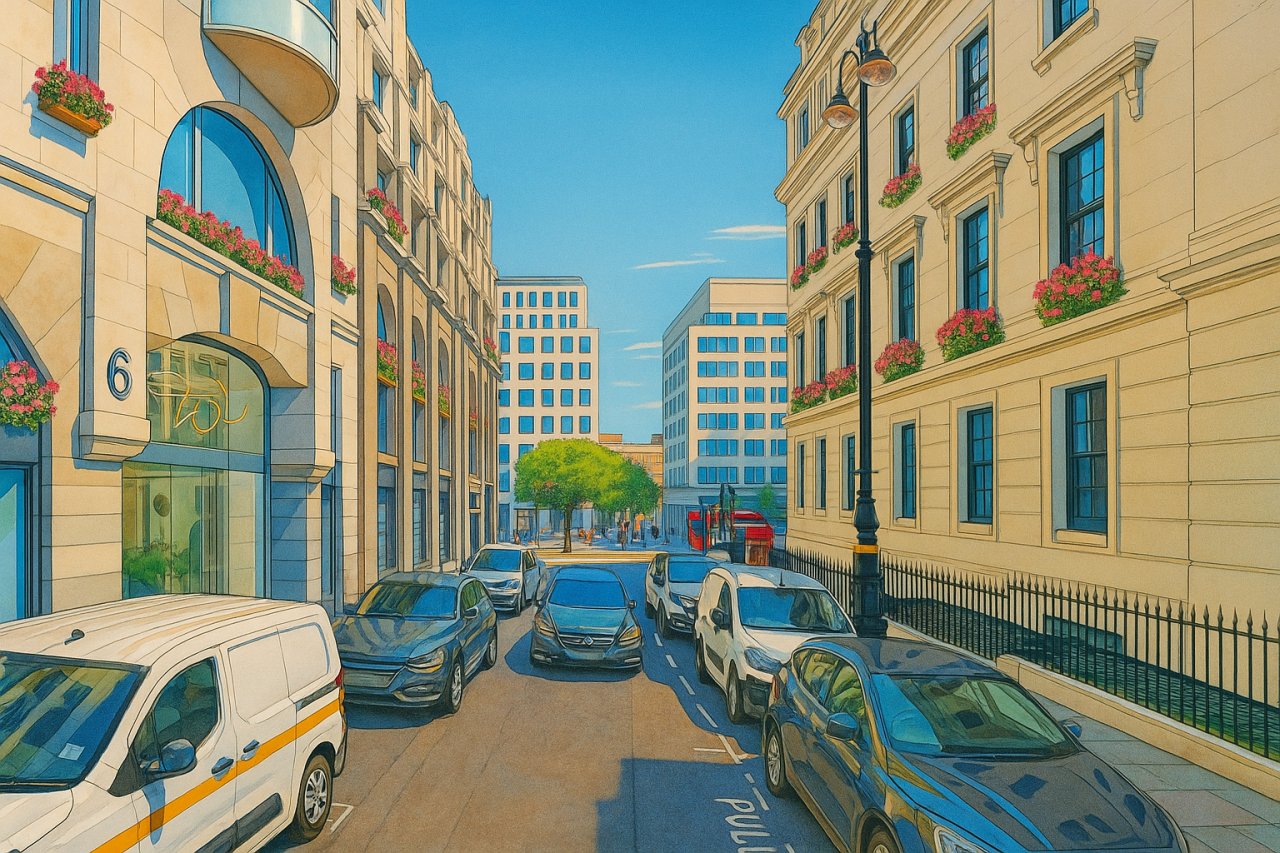
Agar Street, London
Agar Street is a short but historically resonant street in the City of Westminster, part of central London. It runs in a single one-way direction from William IV Street in the south to Chandos Place in the north, nestled in the heart of the West End. The street is a stone’s throw from many cultural landmarks and theatres, contributing to its vibrant urban setting.
Overview and Setting
Agar Street measures only about 120 metres (400 feet) in length but offers a compact view of central London's rhythm. It is predominantly commercial in character, lined with office buildings, cafes, and ground-floor retail shops. Despite its modest size, it connects two bustling roads, William IV Street and Chandos Place, which themselves sit between Charing Cross Station and Covent Garden.
The street is pronounced as AY-gər, with the phonetic transcription /ˈeɪɡər/. 
Surrounding Streets and Orientation
Agar Street runs north-south. At its southern end, it begins near William IV Street and continues northward to Chandos Place. Nearby streets include Bedford Street to the west, St Martin’s Lane to the east, and the broader Strand area a short walk away. It lies just to the east of Trafalgar Square and west of Covent Garden, both within walking distance.
Connecting Streets
Historical Background
The street's origin dates to the early 19th century. It was initially part of a reconfiguration of the area as urban development intensified around the West Strand and Trafalgar Square. Its present name, Agar Street, was given in honour of William Talbot Agar, a local landowner and lawyer, sometime during the mid-19th century. Historical records suggest the name was in use by the 1850s. Prior to that, it may have formed part of or adjoined areas with less formalised naming conventions tied to local estates.
Transport Connections
London Underground
The nearest London Underground stations are:
- Charing Cross Station – served by the Bakerloo and Northern lines, approximately 2 minutes' walk to the west.
- Leicester Square Station – served by the Northern and Piccadilly lines, about 5 minutes’ walk to the north.
These stations provide swift access across the city and are listed among key London Underground Stations.
Bus Services
Bus stops along William IV Street, the Strand, and St Martin’s Lane serve multiple routes including:
- Route 24 – Pimlico to Hampstead Heath
- Route 29 – Trafalgar Square to Wood Green
- Route 176 – Penge to Tottenham Court Road
These services offer efficient travel to locations not served by the Tube and are popular among locals and tourists alike.
Notable Sights and Landmarks Nearby
While Agar Street itself is largely functional and business-oriented, it sits amidst an array of tourist hotspots:
- Covent Garden – With its piazza, market, and street performances, it's just a few steps away to the northeast.
- London Coliseum – Home of the English National Opera, located just east off St Martin’s Lane.
- National Gallery and Trafalgar Square – Only a short walk west from Agar Street.
- Garrick Theatre – Located just south on Charing Cross Road.
Real Estate and Property Market
As of June 2025, Agar Street's centrality commands premium commercial rents, with Grade A office space leasing for £75–£85 per square foot annually. Retail units fetch significantly more, especially those with street frontage, with rents reaching up to £140 per square foot.
There is limited residential property directly on Agar Street due to its commercial focus. However, surrounding areas such as Covent Garden, St Martin’s Lane, and Bedfordbury offer luxury flats. Typical one-bedroom flats around this area measure between 550–700 sq ft (51–65 sq m) and can sell for £900,000–£1.3 million. Rental rates are similarly high, ranging from £2,800 to £4,200 per month for one-bedroom units, depending on finish and building amenities.
Fun Fact
Agar Street once led directly to the site of the now-demolished Gaiety Theatre, an iconic venue that stood on the edge of the Strand and was known for Edwardian musical comedies. Though the theatre itself no longer exists, the area retains its performance-oriented heritage, with street names and plaques subtly reminding passers-by of the lost golden era of the West End stage.
Quick Facts
- Location: City of Westminster, London
- Length: Approximately 120 metres
- Pronunciation: AY-gər (/ˈeɪɡər/)
- Direction: One-way from William IV Street to Chandos Place
- Nearest Tube Stations: Charing Cross (Bakerloo, Northern), Leicester Square (Northern, Piccadilly)
- Nearby Bus Routes: 24, 29, 176
- Main Uses: Commercial offices and retail
- Nearby Attractions: Covent Garden, National Gallery, Garrick Theatre
- Residential Prices Nearby (2025): £900,000–£1.3M for 1-bed flats
- Rental Prices Nearby: £2,800–£4,200/month
- Historic Fact: Close to the former site of the Gaiety Theatre
References
- Zoopla Property Prices – Central London
- Transport for London – Bus and Tube Map
- Survey of London – Historical Background on Agar Street
Map of Agar Street, London
 Painting of Agar Street, London
Painting of Agar Street, London